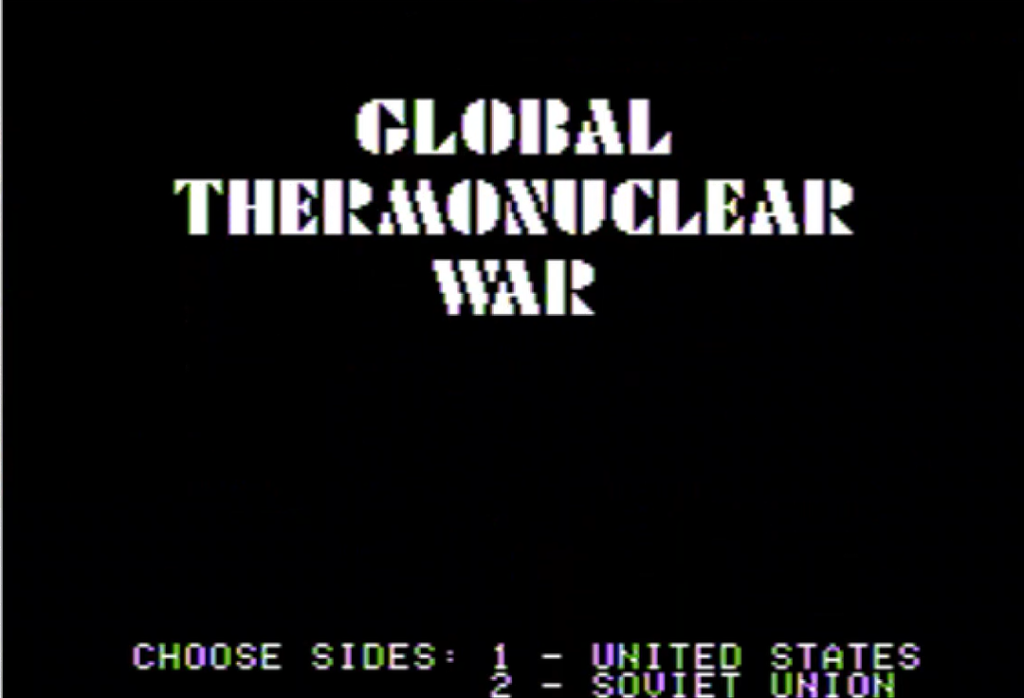
– I think we should move to DEFCON 1!
– Why?
– I just launched more than one thousand ICBMs toward the Soviet Union.
Global Thermonuclear War is the game based on the “game” found in the movie WarGames.
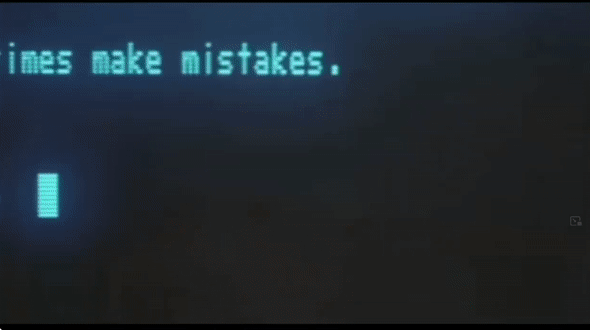
Global Thermonuclear War opens with a map of the world. Assets and targets of both sides (missile silos, subs, cities, command centres,…) are shown as dots on the map:
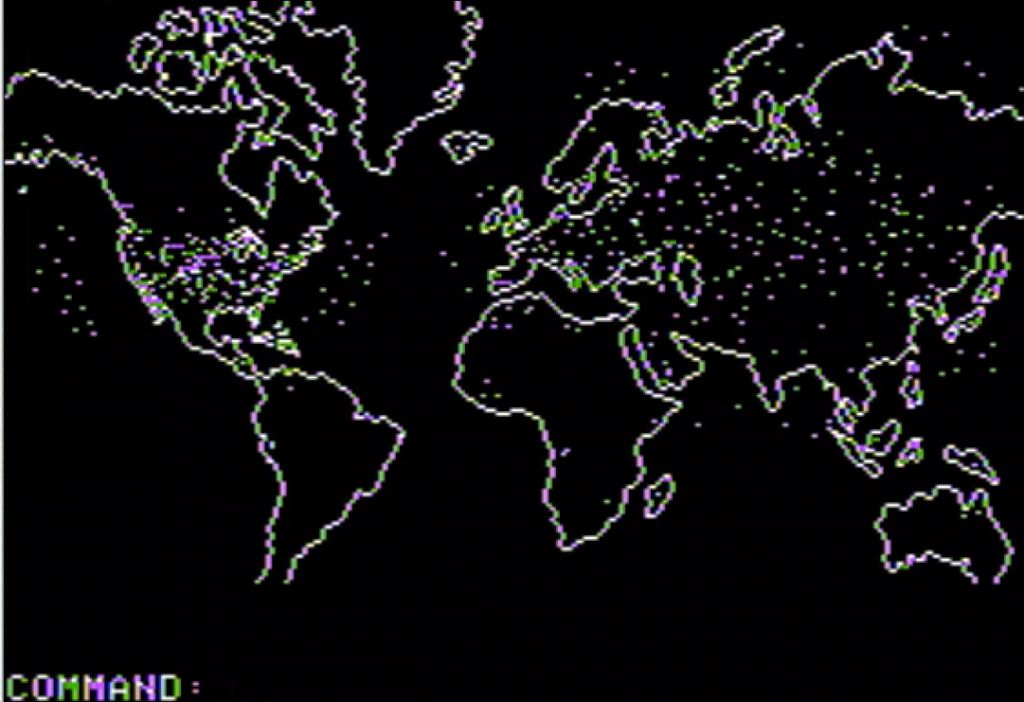
From this menu, the player can type commands that must slowly be typed in full letters – if you go too fast, some letters are skipped and of course backspace does not work. There are 9 different commands but only one of them is useful at the moment: DEFINE STRIKE
DEFINE STRIKE opens the menu where I can allocate my different vectors in columns to targets in line:
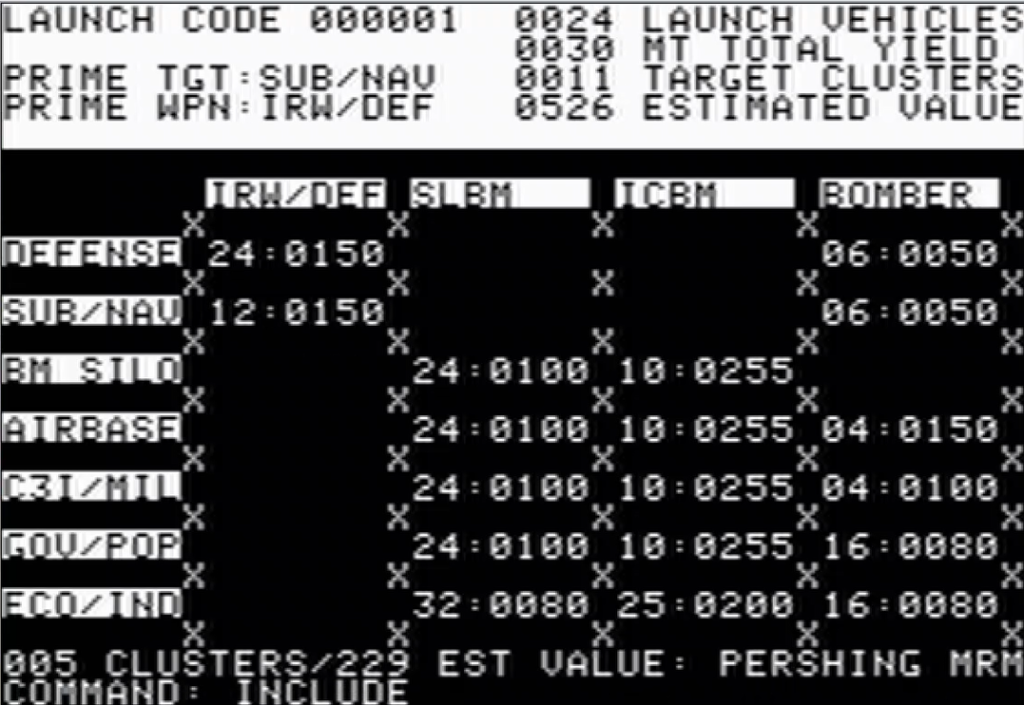
Three of the “vectors” are the usual components of the nuclear triads:
- ICBM : Intercontinental Ballistic Missile,
- SLBM : Submarine Launched Ballistic Missile,
- Bombers,
The last item is IRW for Intermediate Range Weapon. They are not strategic weapons but they are designed to disable the enemy defensive capacities and naval assets, including submarines apparently. It seems a bit of an overkill to use a 150 kt nuke for that but whatever sinks your sub.
From this screen, I can select an available vector/target combination and command “INCLUDE” to add it to a strike. Once this is done… I have to type INCLUDE a lot more (10+ times) because a new target immediately replaces the one I selected, and the target list goes deep.
You may think that the game is about allocating the vectors wisely between the different targets, but you would be wrong. Every warhead is already earmarked for a target, and INCLUDING all the available ICBMs in a strike against enemy airbases does not remove any ICBM from a strike on economic centres. There is no reason not to allocate everything, always, and the only real “choice” is whether you want to send all your missiles at the same time or batch them in bite-size launches for convenience’s sake.
In my case, I choose to send a SUB/NAV batch first – maybe I can knock out some Soviet submarines before they launch their payload.
The game returns to the map view, and I LAUNCH STRIKE. The game asks me for the name of the strike : 000001.
And off it goes.
I repeat the operations, sending one batch by target type. Each of them includes hundreds of launch vehicles, and I have sent many more than the manual claims should be available to the USA.
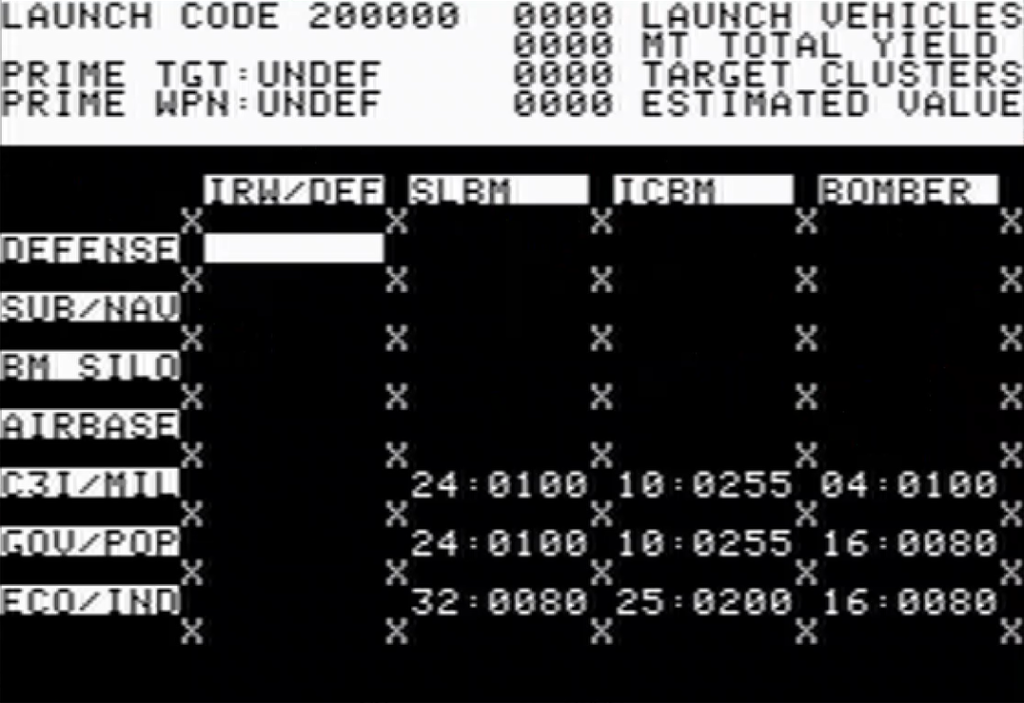
The game is in real-time even as you struggle to write “INCLUDE” dozens of times without typos, and by now the first missiles have already travelled a bit, some of them having already hit some Soviet submarines off the coast of Florida. The Soviets have not reacted yet. I may have achieved total strategic surprise.
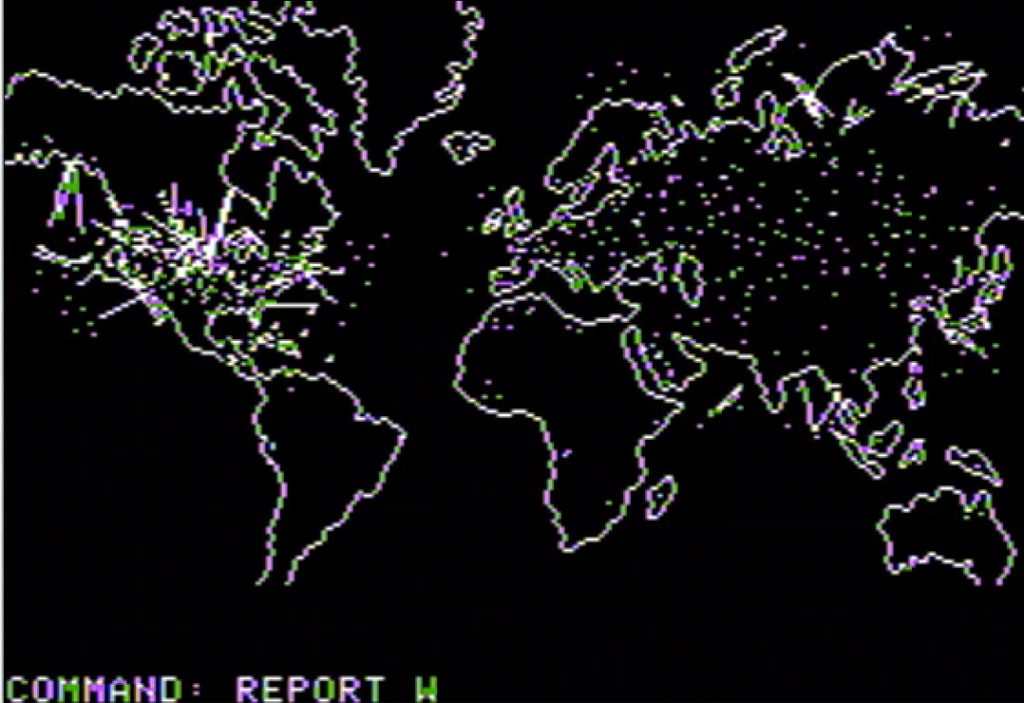
At any point in the game, I can command REPORT WAR STATUS which tells me how many losses I caused the Soviets. The report is weird, I have apparently lost 5.5% of my defence and some housing even though I haven’t detected any Soviet launch yet. I guess don’t build your house on top of a missile silo next time?
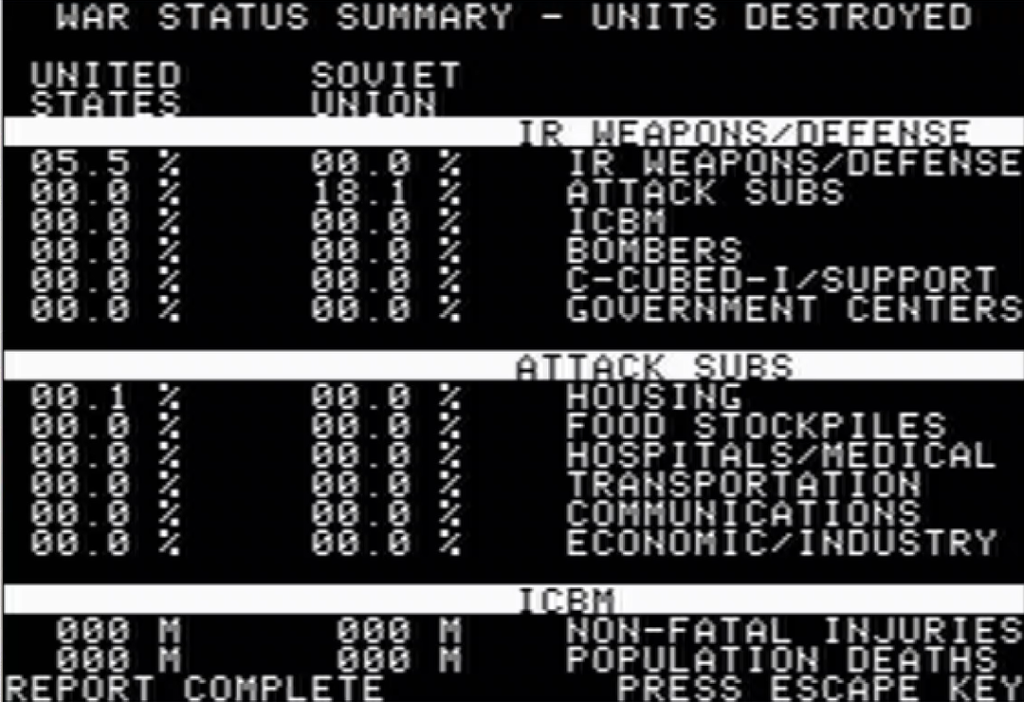
Sometime later, I send my last batch of missiles. I have no more “active” action in the game now – the game is now in automode.
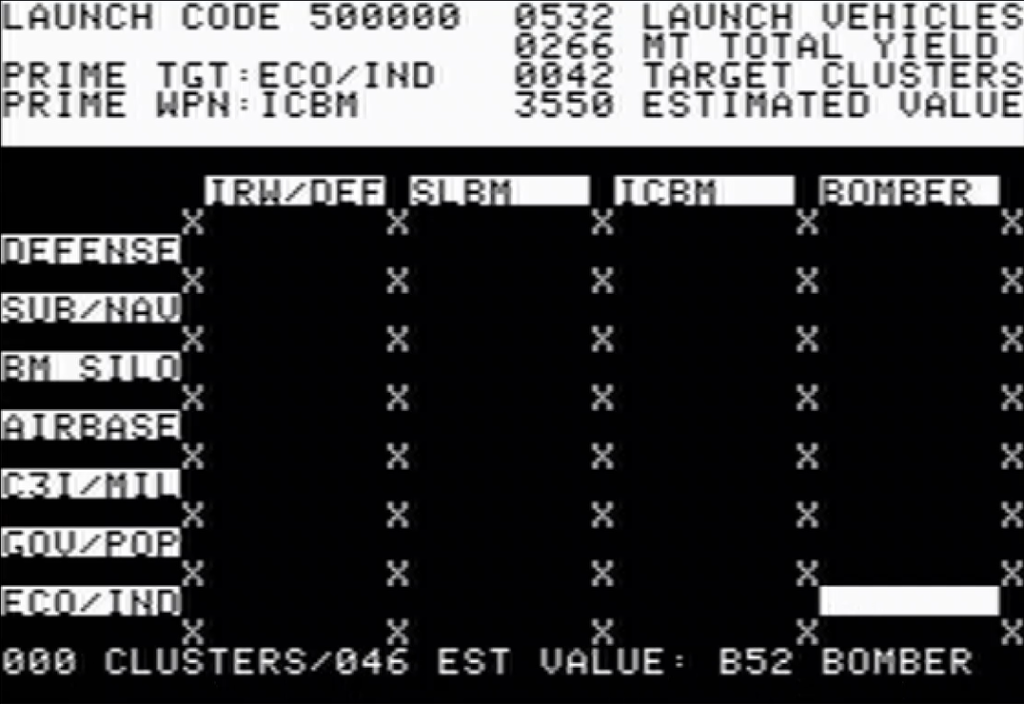
Just as I send my last missiles the Soviets start to react. The REPORT ATTACK STATUS allows me to check what the Soviets are targeting. Apparently, the Soviet Strategic Command decided to go through the list from top to bottom, initially focusing on my empty submarines and ICBM silos.
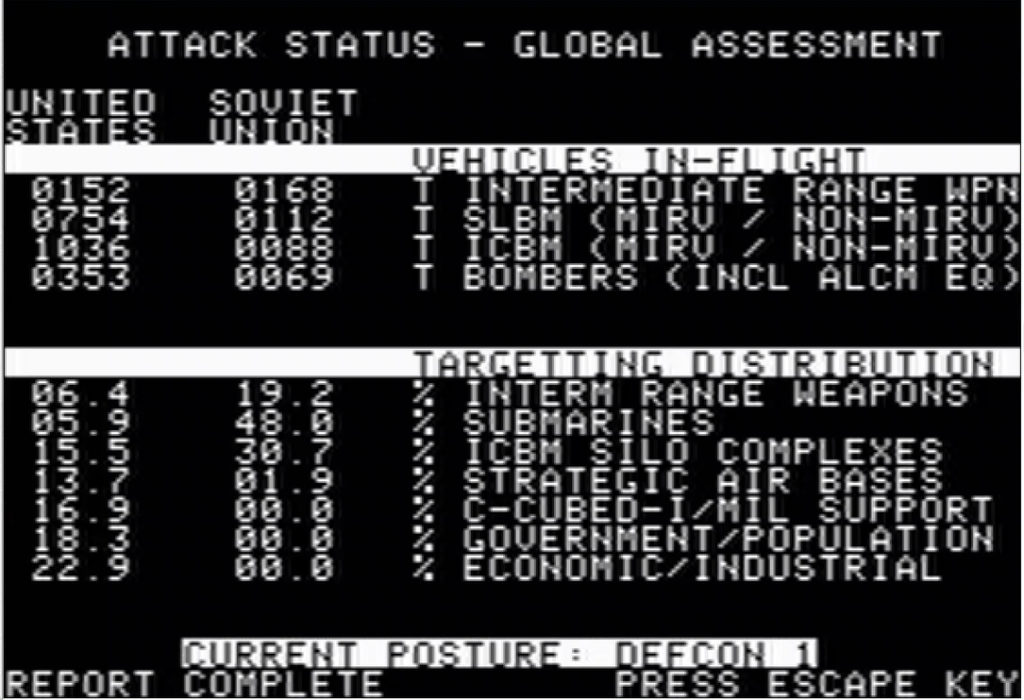
Eventually, they send everything they have, and what’s left to do for both sides is to watch the world burn:
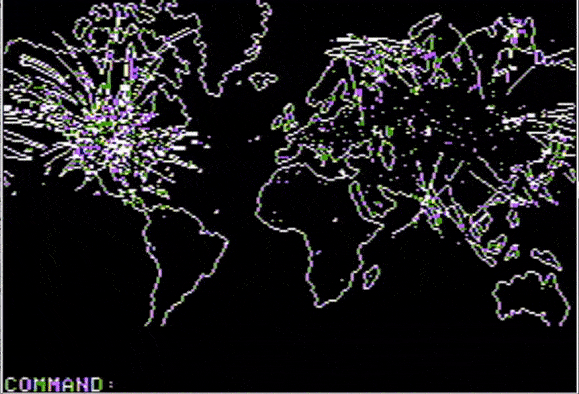
When all the warheads find their way to the ground the war ends. The Soviets have been neutralized, with 182 million deaths and more than 200 million wounded, for 43 million casualties on my side. McNamara would be proud of those stats; the war is won.
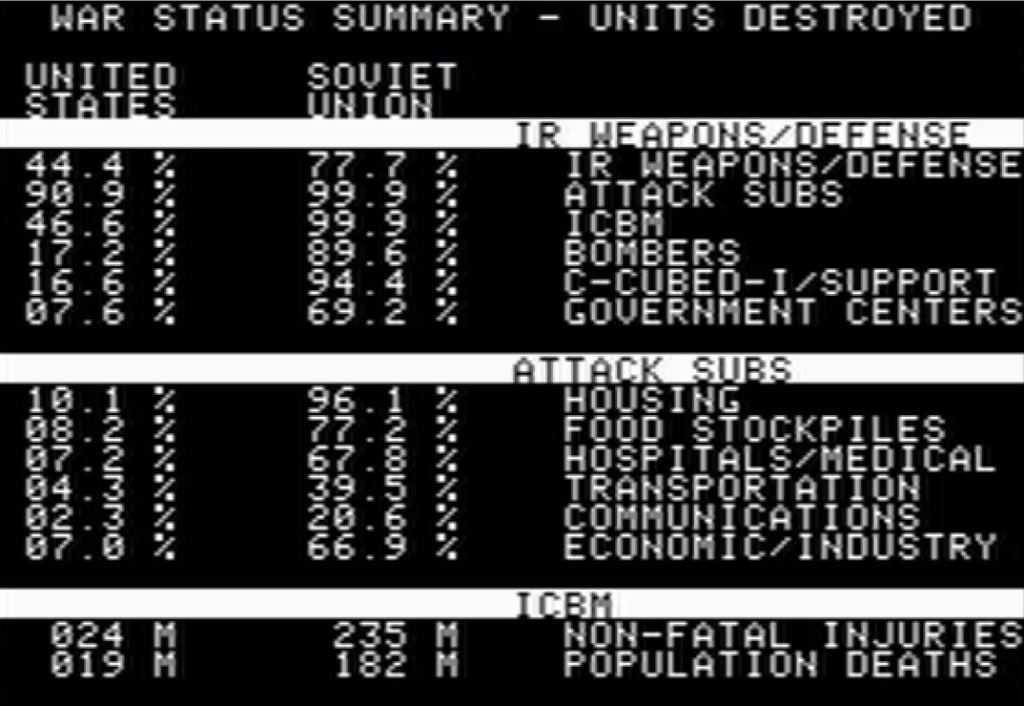
Given how much effort it took to play the game and how little interaction it offered, I might as well have rewatched the movie’s finale:
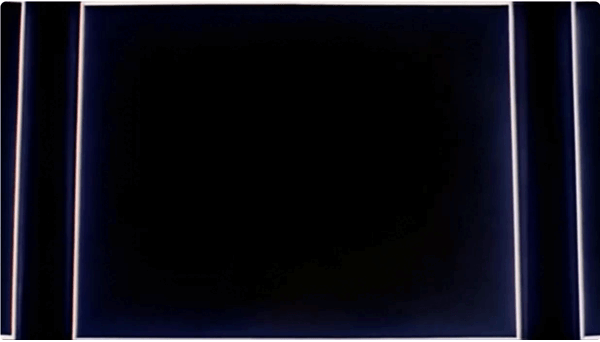
Global Thermonuclear War receives a BRIEF and not a full-fledged article because it only pretends to be a game: there is no choice to make (except not going all-in, but there is no gameplay reason to do that) and the only decision that mattered in my two tests is whether I started sending my nukes before the Soviets launched theirs. The only winning move is to strike first.
Trying to track down the origin of Global Thermonuclear War game turned out to be the real challenge. MobyGames has two entries for Global Thermonuclear War:
- one for a 1983 game attributed to Starfire Games and PC-SIG for DOS and Apple II,
- one for a two-player NukeWar-clone for TRS-80 Color Computer released in May 1984 attributed to T&D Subscription.
The 1983 entry has two sets of wildly different screenshots: the Apple II set corresponds to what I played, and the DOS set corresponds to another two-player game that plays like a turn-based DEFCON. It is fairly obvious that two games with the same name were merged into one entry; the DOS game is actually a different Global Thermonuclear War game released sometime between 1984 and 1986 by PC-SIG, a shareware disk publisher founded in 1984.
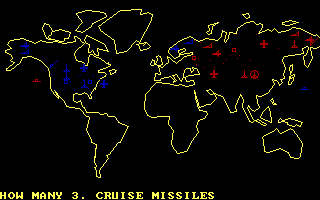
The natural conclusion would be that the Apple II version is indeed by Starfire Games but, hold on, we need to talk about Starfire Games first.
Starfire Games, “a division of Omnisoft Corporation“, did not leave much of a digital footprint. Both companies suddenly appeared in the September and October 1983 issues of several significant computing magazines (BYTE, PC Mag, Softalk, …), with Starfire Games having paid full-page ads for Global Thermonuclear War but also Casino Master and later Time Machine I.
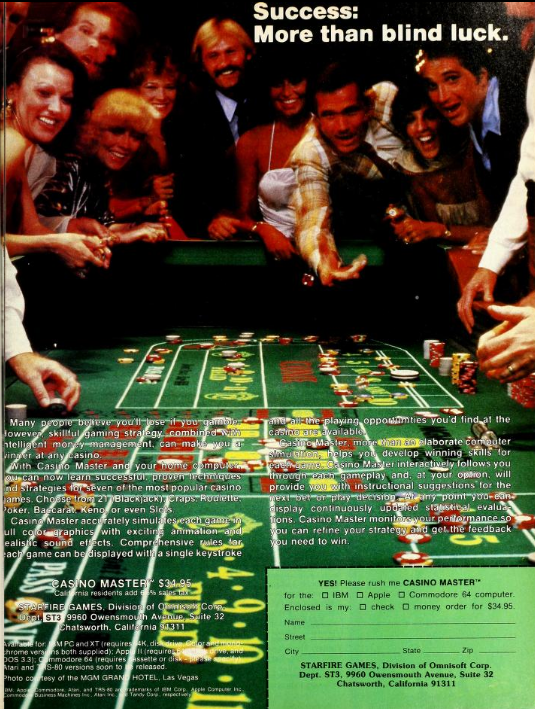
If you think that’s a pretty solid and diversified line-up for a new company, you should see what Omnisoft Corporation advertised! If you are an engineer and want it, they have it, either in Pascal or in FORTRAN!
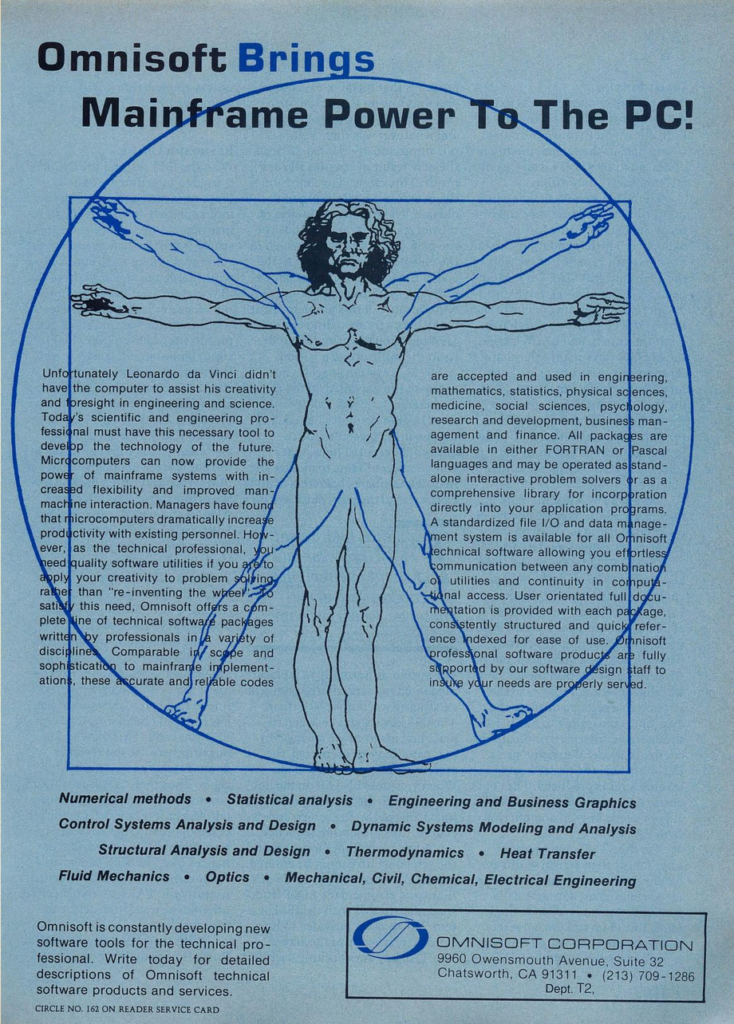
Alas, Omnisoft/Starfire Games promised a lot, but the facade started to crack early 1984, with Softalk publishing in March 1984 two letters of readers complaining that they never received what they ordered from Starfire Games.
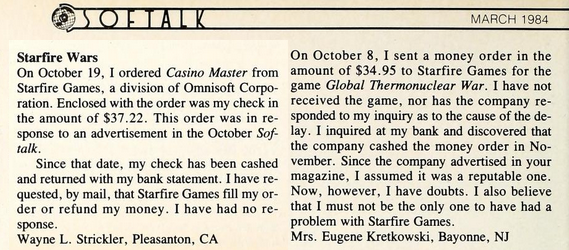
In May 1984, inCider communicated that “inCider has received numerous letters regarding Starfire Games […] These complaints center on Omni Soft’s apparent disinclination to ship ordered products or refund checks. We have attempted to contact Omni Soft on behalf of our readers, but to date our efforts have been unsuccessful. We’re still trying.” The same month, Softalk wrote the F. word:
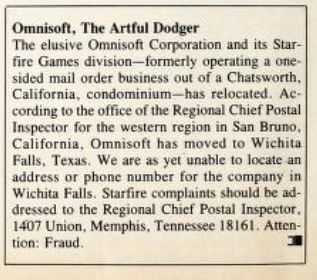
That’s the last time anyone wrote about Omnisoft Corporation or Starfire Games. I reckon there never was a Global Thermonuclear War (nor a Casino Master, nor a Time Machine I) by Starfire Games – what happened is that someone updating Mobygames found the ads, browsed through Apple II dumps to find a game that could match, found an Apple II game with the same name and made the logical conclusion that the Apple II game with no credit matched with the ad with no game.
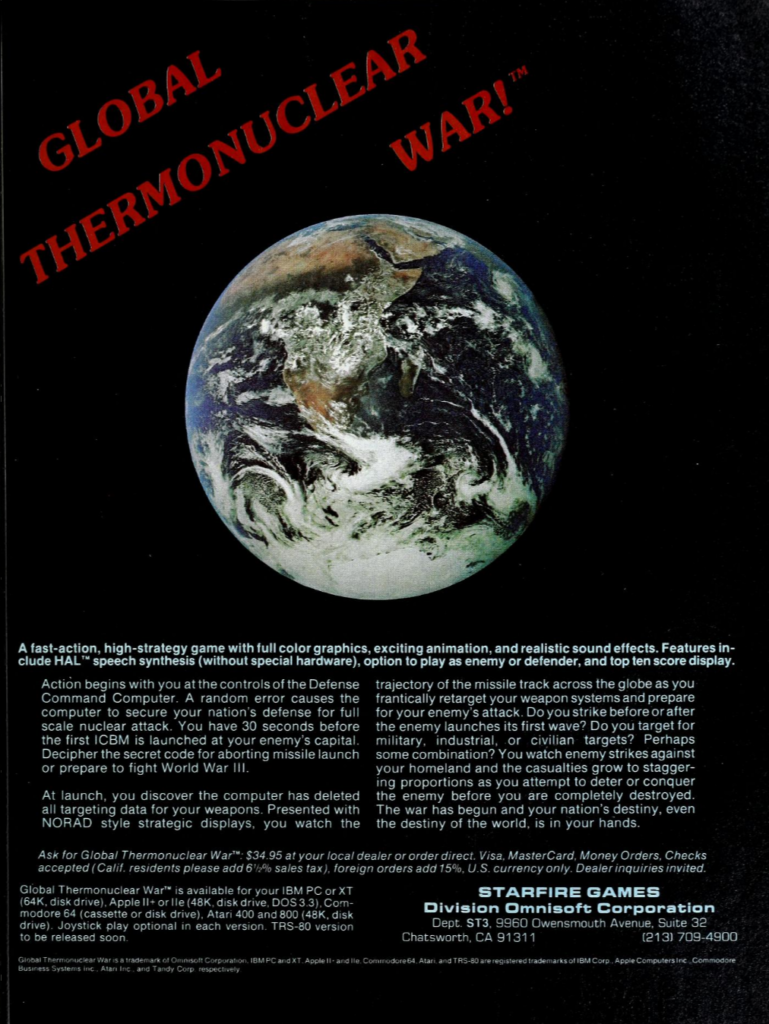
Note that the description does not match to any of the known Global Thermonuclear War games
So where does my Global Thermonuclear War come from? There is no indication in the game (except a “Blade presents” intro that is obviously a later addition) but the digital samizdat of the manual starts with “Global Thermonuclear War docs by Bill M. Sprague. Copyright (C) 1983, 84, Apollo Software, Inc”. There is indeed a company called Apollo Software, founded in 1981 or earlier, which sold various business software (typically for text and graphic editing) for the Apple II. Apollo Software never advertised Global Thermonuclear War anywhere, but if it is the same company it is not hard to imagine why. I could also find a Bill Sprague on LinkedIn who worked on ICBM development in the early 80s, so he is likely to be the real author of the game. Without any other information, I will end my investigation here and will consider the game as having been released in 1983.
In line with today’s theme, I found it appropriate to update an earlier article covering the nuclear warfare game WAR (1972). I was finally able to play the game thanks to a fix sent to me by one of the co-authors, who also provided some amusing tidbits about its history. As for the next game…
…. how about a nice game of Fortress?